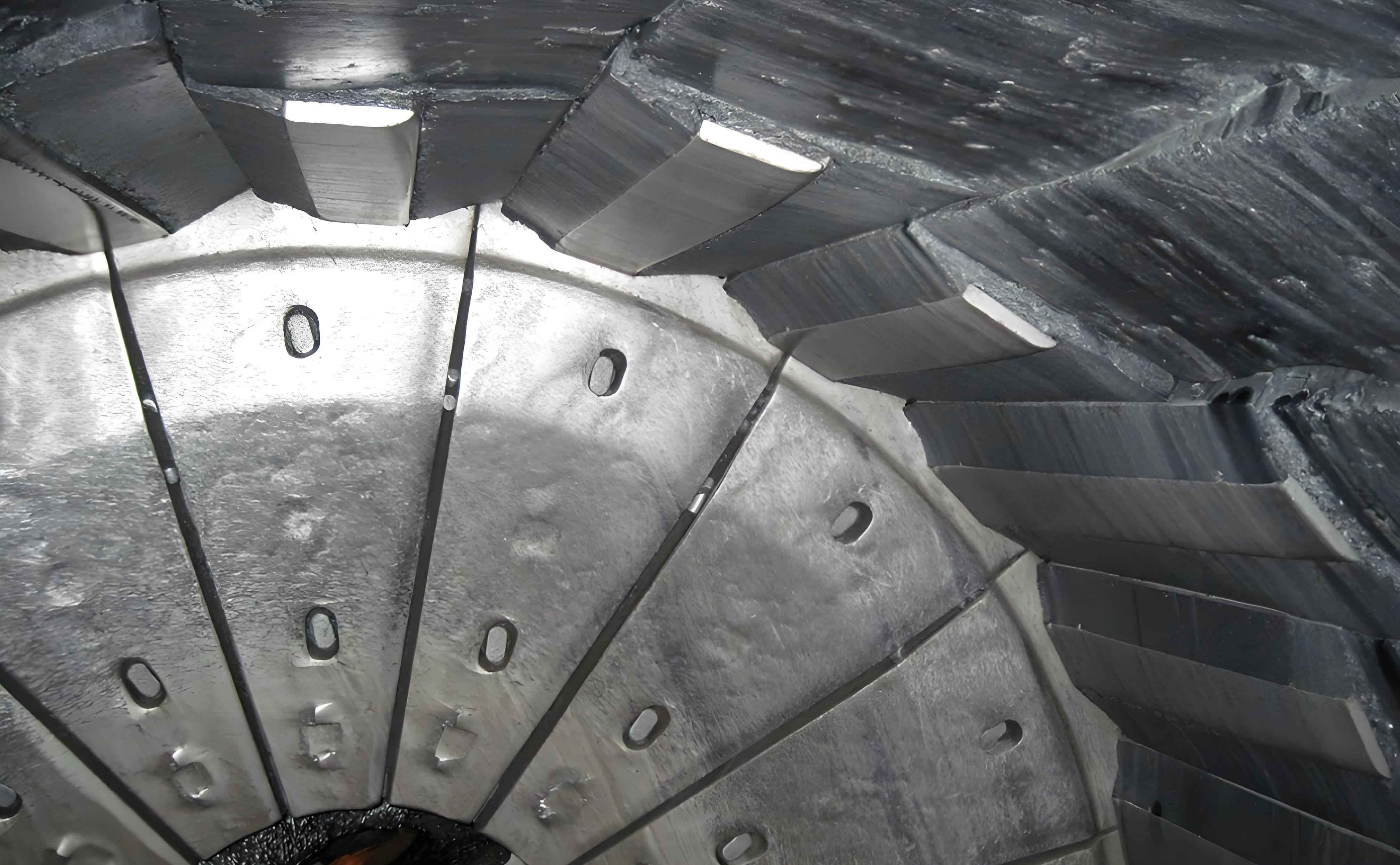1. Introduction
As a critical component of ball mills, the lining plate is subjected to continuous impact and friction from grinding media during operation, leading to significant wear. Understanding the wear mechanisms of the lining plate is essential for optimizing mill efficiency and reducing maintenance costs. This study employs the Archard wear model to simulate the wear behavior of a binary particle system (5 mm and 10 mm steel balls) under varying conditions, including the absence of lifters, different lifter shapes, and lifter heights. The goal is to explore particle stratification, energy dissipation, and their effects on lining plate wear using Rocky-DEM simulations.

2. Methodology
2.1 Archard Wear Model
The Archard wear equation is fundamental for predicting material loss due to sliding friction:V=kFτ⋅sHV=kHFτ⋅s
where:
- VV: Volume of worn material.
- FτFτ: Tangential force.
- ss: Sliding distance.
- HH: Material hardness.
- kk: Dimensionless wear coefficient.
In Rocky-DEM, the incremental form is applied:ΔV=C⋅ΔWτΔV=C⋅ΔWτ
where C=k/HC=k/H and ΔWτΔWτ is the tangential work done during collisions.
2.2 Simulation Setup
A simplified 305 mm × 150 mm ball mill cylinder was modeled in UG and imported into Rocky-DEM. Key parameters include:
| Parameter | Value |
|---|---|
| Cylinder/Particle Density | 7,800 kg/m³ |
| Poisson’s Ratio | 0.3 |
| Shear Modulus | 70 GPa |
| Static Friction Coefficient | 0.5 (particle-particle) |
| Dynamic Friction Coefficient | 0.1 (particle-particle) |
Table 1: Material and interaction parameters.
3. Simulation Scenarios
3.1 Lifter Shape Comparison
Three lifter configurations were tested: No Lifters, Rectangular Lifters, and Trapezoidal Lifters.
| Configuration | Key Observations |
|---|---|
| No Lifters | Small particles concentrate at the cylinder center; large particles distribute peripherally. |
| Rectangular Lifters | Small particles gather axially at both ends; higher lining plate wear. |
| Trapezoidal Lifters | Reduced friction and energy dissipation compared to rectangular lifters. |
Table 2: Impact of lifter shape on particle distribution and wear.
3.2 Lifter Height Comparison
Lifter heights of 7.5 mm, 10 mm, and 15 mm were analyzed:
| Height (mm) | Key Observations |
|---|---|
| 7.5 | High energy dissipation; unstable particle motion. |
| 10 | Balanced particle distribution; moderate lining plate wear. |
| 15 | Increased particle velocity; reduced friction but higher impact energy. |
Table 3: Effect of lifter height on wear behavior.
4. Results and Discussion
4.1 Particle Stratification
- Without Lifters:
- Small particles (5 mm) accumulate centrally due to lower inertia.
- Large particles (10 mm) migrate outward, causing localized lining plate wear.
- With Lifters:
- Axial redistribution of small particles toward cylinder ends.
- Rectangular lifters induce 15% higher wear than trapezoidal designs.
4.2 Energy Dissipation Analysis
- Impact Energy:
- Large particles contribute 70% of total impact energy.
- Archard model underestimates impact-induced wear.
- Frictional Work:
- Rectangular lifters increase sliding distances, elevating ΔWτΔWτ.
- Trapezoidal lifters reduce tangential forces by 20%.
4.3 Wear Volume Comparison
| Configuration | Wear Volume (mm³) |
|---|---|
| No Lifters (50 s) | 1,250 |
| Rectangular Lifters | 980 |
| Trapezoidal Lifters | 820 |
Table 4: Wear volume under different configurations.
5. Limitations and Future Work
- Archard Model Limitations:
- Ignores impact wear, leading to underestimation of lining plate degradation.
- Requires integration with impact energy models (e.g., SEMI).
- Future Directions:
- Develop hybrid wear models combining sliding and impact mechanisms.
- Optimize lifter geometry using AI-driven design tools.
6. Conclusion
- Lifter Shape: Trapezoidal lifters reduce lining plate wear by 25% compared to rectangular designs.
- Lifter Height: Increasing lifter height lowers friction but amplifies impact energy.
- Particle Size: Large particles dominate wear due to higher kinetic energy.
This study provides actionable insights for optimizing lining plate durability and mill performance.
